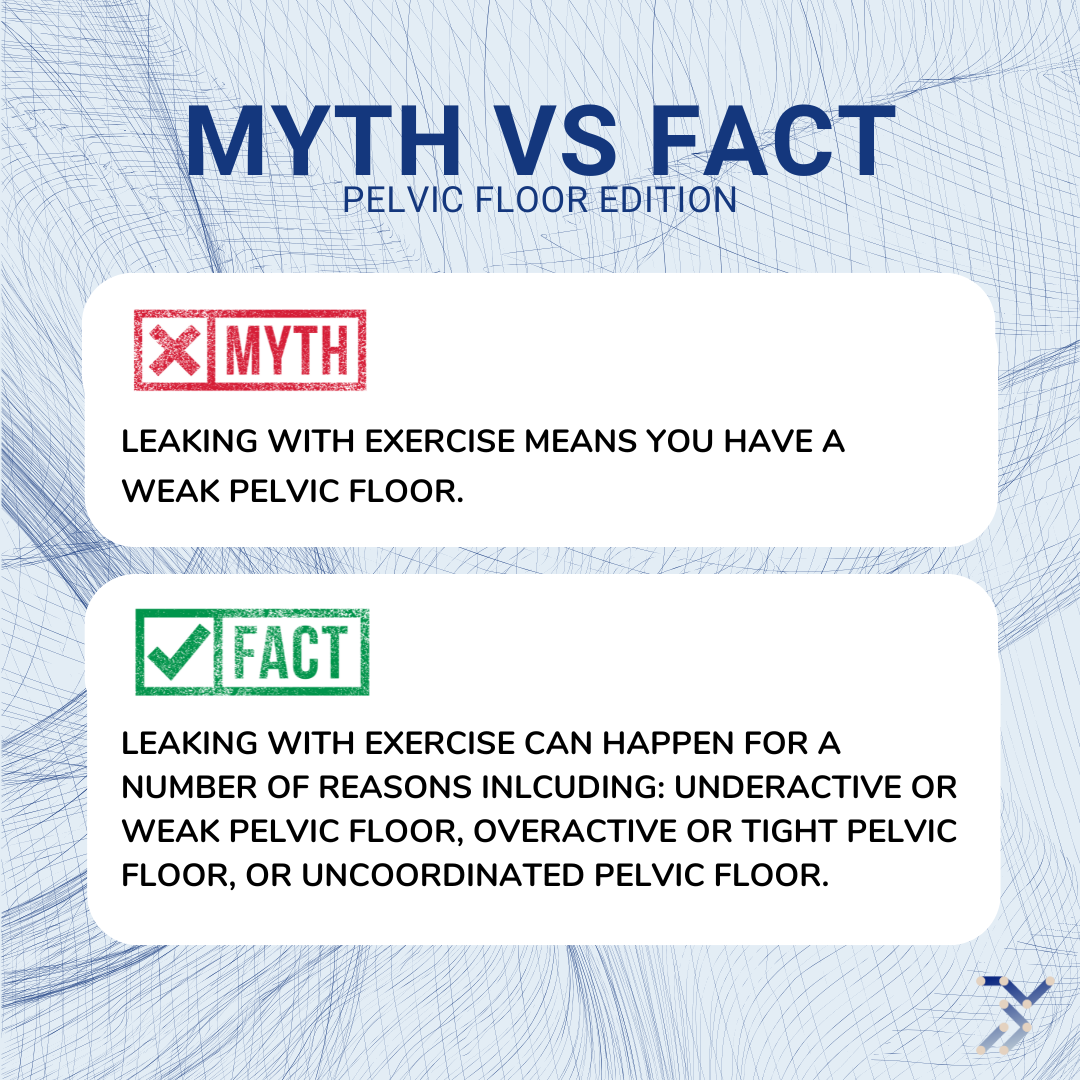Leaking with exercise does NOT always mean you have a WEAK pelvic floor…
Do you experience symptoms of leaking urine with exercise? Have you been told this means you have weak pelvic floor muscles? Turns out your symptoms might not be associated with weakness. Understanding why you are experiencing symptoms of leaking with exercise is step 1 to solving the problem. While weak or under activated muscles can result in leaking, so can overactive or tight muscles as well as uncoordinated muscles. Does this sound confusing? I think so too… Here’s an analogy to help explain…
THE BICEP ANALOGY:
Let’s compare your pelvic floor contracting to prevent leaking to a bicep contracting to bend your elbow. A healthy bicep flexes with enough strength to bend the elbow, but it also can relax after to recover and straighten the elbow so it’s ready to flex again should the need arise. It is also coordinated enough to flex at the right time, quickly enough so the elbow is flexed when it should be and relaxed when it should be.
UNDERACTIVE PELVIC FLOOR:
If the bicep is weak or underactive it can’t flex fully, or hard enough to bend the elbow. A weak pelvic floor won’t contract fully or hard enough to meet the demands of exercise and a person can experience leaking. A person with a weak or underactive pelvic floor may also experience other symptoms like vaginal fullness, heaviness, or feeling like a tampon is falling out.
OVERACTIVE PELVIC FLOOR:
If the bicep is overactive or too tight it doesnt relax well and the elbow is already mostly bent. The bicep is also always “on” and therefore with no rest it is very fatigued. If the need arises to flex the elbow fully, the bicep has no energy left. A pelvic floor like this won’t have energy left to meet the demands of exercise, and when the exercise gets hard enough, leaking still happens. A person with an overactive or tight pelvic floor may also experience symptoms like constipation, tailbone pelvic pain, pain with sex, inability to insert a tampon or have penetrative sex.
UNCOORDINATED PELVIC FLOOR:
If the bicep is uncoordinated, it won’t contract fast enough or on time to bend the elbow when it needs to be bent. Relaxing the elbow can be hard as well. An uncoordinated pelvic floor may only experience leaking during certain activities that require speed. Maybe lifting a heavy weight is no problem for you, but a sneeze results in leaking.
What can be done?
You can see a pelvic health therapist!
Leaking with exercise is not a life sentence and there is SO much that you can do about it! What’s better is that none of the solutions have to be invasive. I help people with issues like this every day and in many cases no internal exam is necessary. Building awareness, control, strength, relaxation, and coordination in muscles can be done entirely through EXERCISE and hands off techniques. Not only that, because my work is hands off, I work virtually with clients to solve these issues who are not local to Boston for an in person session. Click here to book a consult or email me at laura@backbayhealth.com.
If you’d like to learn more about leaking with exercise and how pelvic floors function, click here to read my other blogs: Pelvic Floor 101. and 5 things you are doing that are not helping with your stress incontinence.

